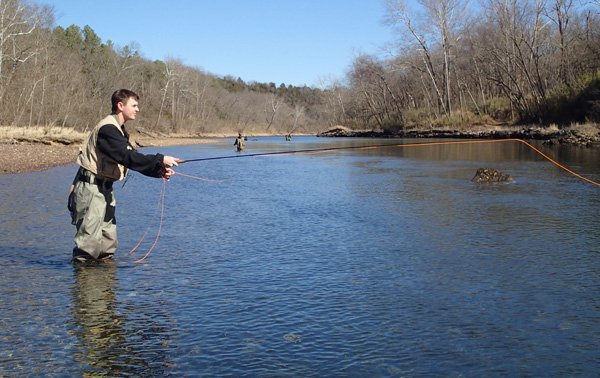A proposed water plan for the state could leave Northwest Arkansas short of drinking water in time of drought, the head of the Beaver Water District said.
The director of the agency drawing up the plan dismissed those concerns.
A draft of the state’s updated water plan would — for the first time — define farmers who irrigate by pumping water out of the White River as “users” of Beaver Lake’s water, said Alan Fortenberry. He’s chief executive officer of the Beaver Water District, which oversees distribution of drinking water from Beaver Lake.
“In a time of shortage, the water’s going to be divvied up among the users, and this plan considers farmers downstream who are irrigating their land to be users,” he said.
Beaver Lake is a reservoir on the White River, built when fewer than 100,000 people lived in Benton and Washington counties. The lake is the region’s main source of drinking water and serves more than 420,000 people in five counties.
The Arkansas Natural Resources Conservation Commission is updating the water plan for the first time since 1990. The plan sets out who has rights to water, whether the source is rivers or underground formations such as aquifers.
Water Fight
East Arkansas’s Alluvial Aquifer is running dry, mainly because farmers have overused it for irrigation. Researchers at the resources commission predict the aquifer will run dry by 2050 at current use rates.
Rice is the state’s most water-intensive crop, but modern agriculture also needs irrigation for cotton, soybeans and other crops in drought years. Farming is by far the state’s heaviest water user, outstripping drinking water and industrial use by a five-to-one ratio, according to commission figures.
Randy Young, director of the resources commission, said Northwest Arkansas would have “the big-time upper hand” in any dispute arising on who has priority for Beaver Lake’s water in a time of severe drought.
“The law is on their side,” Young said of the Beaver Water District. Beaver Lake is a federal reservoir so the federal law that created the reservoir set the priorities. Water for irrigation isn’t one of those priorities, he said. He also cited Act 1051 of 1985 in state law, which restricts the commission’s ability to transfer water.
Fortenberry contends federal law isn’t as cut and dried as it appears. For instance, federal law appears to prohibit release of water from Corps of Engineer lakes to maintain water levels for barge navigation in Missouri, he said. Yet when a recent drought threatened to lower river levels to the point that barges could not travel, the water was released.
“It’s politics,” Fortenberry said. “What this could set up is a fight of the poultry industry against the rice industry.” Northwest Arkansas food processing plants are major users of Beaver Lake water. Any restrictions on use of that water would be resisted by the industry, he said.
The Legislature will review the water plan before the commission approves the final version.
Saving For Shortage
Farm irrigation wells are usually dug within crop fields and often pumped by diesel engines. As the water level in the underground aquifer goes down, pumping costs go up. Wells have to be dug deeper and the engines have to work longer and harder.
One alternative for east Arkansas farmers is the Grand Prairie Demonstration Project, a federal plan with state and private cooperation. The project is a pumping station and irrigation system that will take water from the White River and store it in reservoirs and private, artificial ponds for irrigation later.
The project will only pump water when there’s plenty of it, Young said. The whole idea is to fill the system with water before any shortage develops, he said. The project will also reduce demand on the aquifer and give it a chance to recover, Young said.
The project is, at best, more than three years from being able to sell any irrigation water, Young said.
East Arkansas farmers deserve a lot of credit for making major investments in irrigation systems, Fortenberry said, but farmers would be under a lot of pressure to protect that investment at a time of severe drought and would bring intense political pressure to make sure those investments did not go unused because of lack of water.
U.S. Rep. Steve Womack of Rogers, who represents Northwest Arkansas’ 3rd Congressional District, promised his cooperation.
“I recognize the importance of Beaver Lake, the sole source of drinking water for more than half-a-million people in Northwest Arkansas, and will continue to work with state and federal officials to ensure we are able to enjoy this vital resource for years to come,” he said.
The watershed for the lake will always need protection but so far the district has received very good cooperation from landowners, Fortenberry said.
The Beaver Watershed Alliance held a series of meetings for landowners this past summer, said John Pennington, executive director. Even among private landowners, healthy forests were the top concern, and the number of landowners interested in some kind of maintenance, conservation or preservation is high, he said.
Water quality in the lake is good, according to the alliance, which works with landowners and others to voluntarily enhance or create stream side buffers, better manage property and increase water quality. The group’s website notes challenges to keeping good quality, including soil erosion and septic systems.

